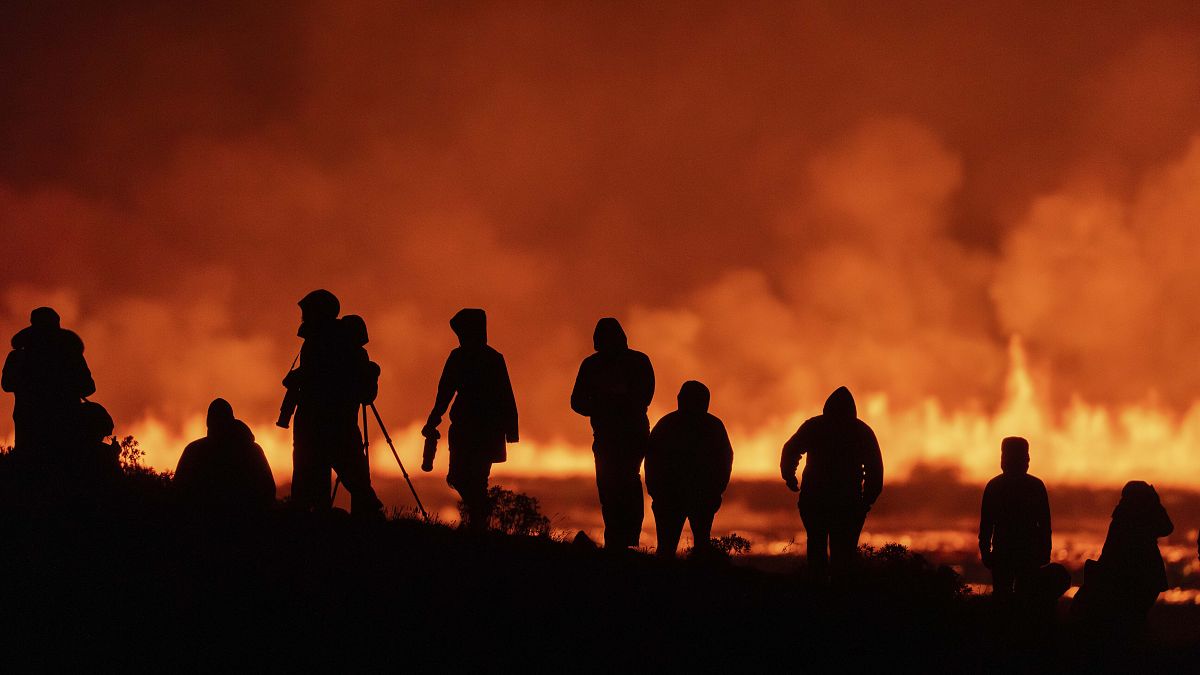The eruption, which began on 22 August following a series of earthquakes, continues to pull in the crowds with people coming to Iceland from abroad in the hope of snapping the perfect Instagram picture.
So-called ‘witch’s hair’ – thin, sharp, glass needles that are created in volcanic eruptions – have started falling on communities across the Reykjanes peninsula as a volcano in southwest Iceland continues to erupt.
It’s caused particular problems in the town of Reykjanesbær where it’s clogged filters at a local swimming pool and caused minor injuries after customers stepped on it barefoot.
“We’ve never seen anything like this before, it definitely didn’t happen in the previous eruptions,” said Director of Sports Facilities, Hafsteinn Ingibergsson.
Minney Sigurðardóttir, a natural hazard expert at the Icelandic Meteorological Agency, said jets from the latest eruption have been particularly high and that’s why the ‘witch’s hair’ has spread so far.
The Iceland Review travel website says as it is essentially fibreglass, it shouldn’t be touched with bare hands. The site says Nornahár, as it’s known in Icelandic, will eventually break down into sand.
“It’s like hay, as if someone has been cutting grass around you and this is the aftermath. But when you pick it up and examine it, it’s like tiny, fine glass needles. If you prick yourself with it, it’s like a needle,” said Reykjanesbær resident, Bragi Sigurðsson.
Meanwhile, the eruption, which began on 22 August following a series of earthquakes, continues to pull in the crowds with people coming to Iceland from abroad in the hope of snapping the perfect Instagram picture.
“The colour of it was really amazing,” Sam Wilkinson, a tourist from Australia, said.
“It felt like we were being drawn in by the fire.”
This is the sixth time the volcano on the Reykjanes Peninsula has erupted since December.
Authorities say the eruption’s effects remain localized with road closures but do not threaten the population.
The nearby Blue Lagoon geothermal spa, one of Iceland’s biggest tourist attractions, reopened to visitors on 24 August after previously being evacuated.
Authorities have advised people not to get too close to the eruption, especially since the lava flow is approaching a contaminated US military training site.
The training site was used between the 1952 and the 1960 was cleared years ago, but “there is quite a sizeable area here contaminated by munitions,” according to Jónas Karl Þorvaldsson, head of the Coast Guard’s special operations team, speaking to national broadcaster RUV.
Despite the warning, people continued to approach the area to get a better view of the eruption.
Iceland, which sits above a volcanic hot spot in the North Atlantic, averages one eruption every four to five years.
The most disruptive in recent times was the 2010 eruption of the Eyjafjallajokull volcano, which spewed clouds of ash into the atmosphere and disrupted trans-Atlantic air travel for months.
The latest eruption is not expected to impact air travel.
Checkout latest world news below links :
World News || Latest News || U.S. News

